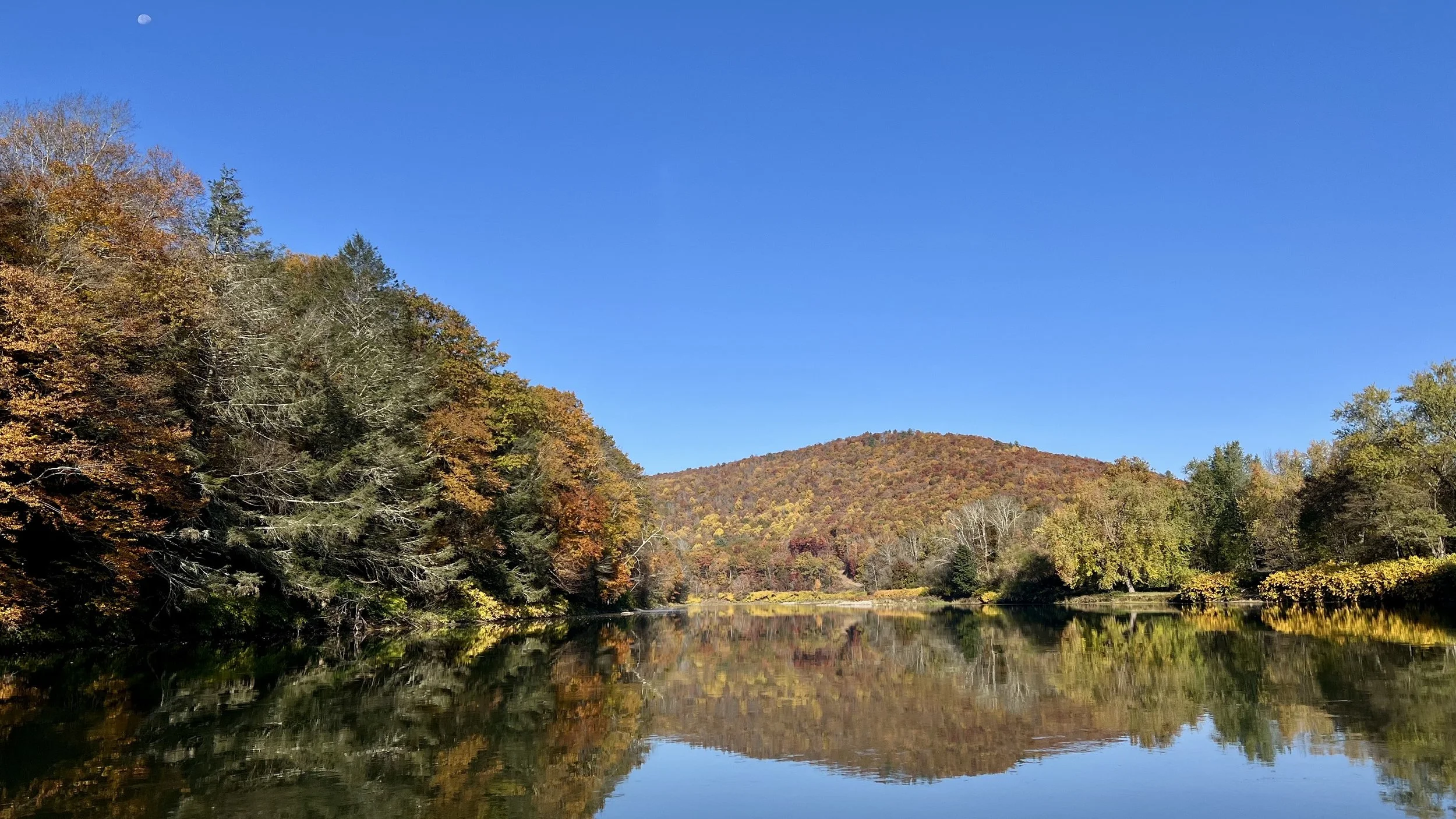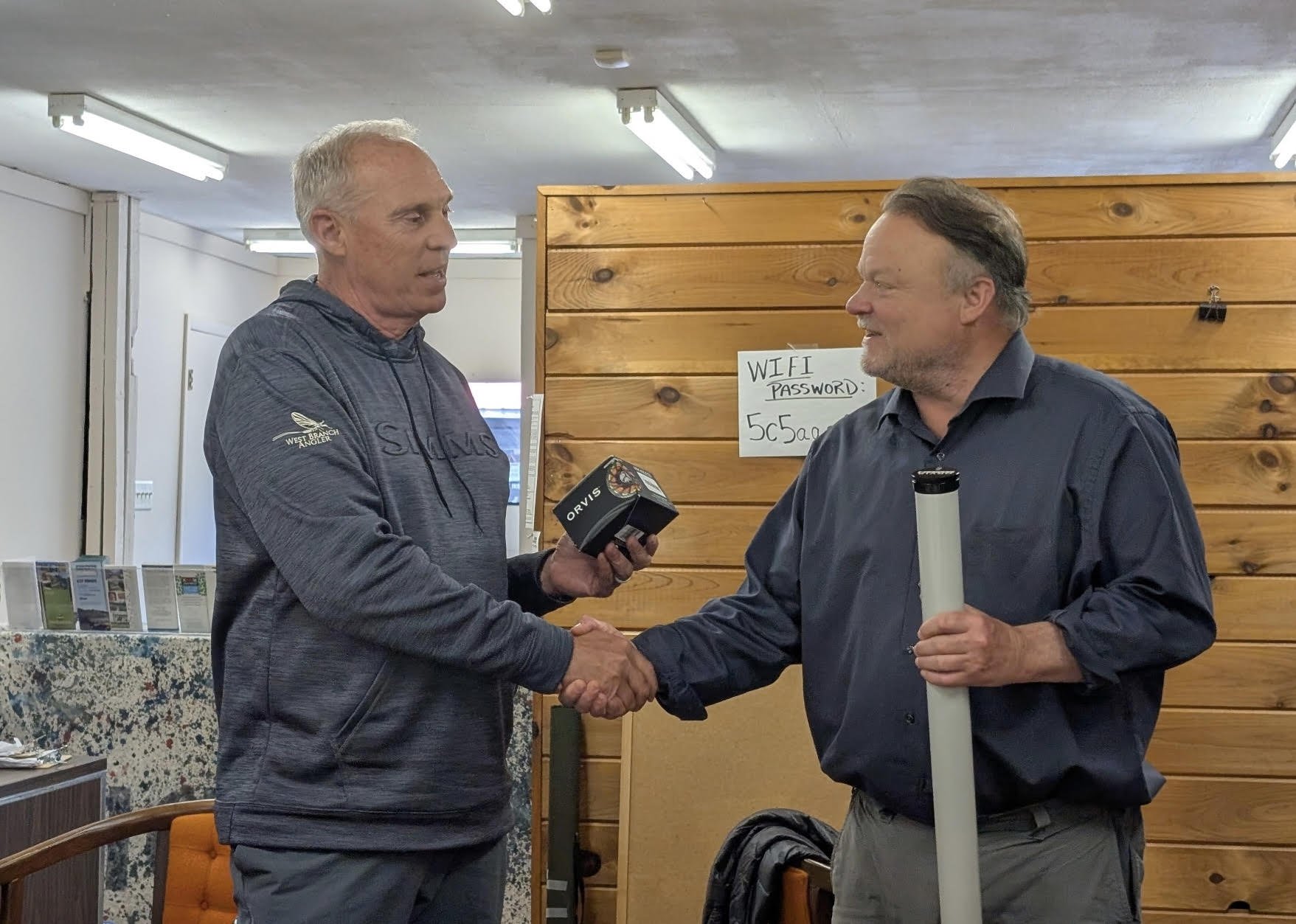Directed Releases on the Upper Delaware River
Photo Caption: Cannonsville Dam
If you’ve ever tried to read about how the NYC Delaware River Basin reservoirs in the western Catskills are managed, you’ve probably run into a wall of technical terms and acronyms. It can feel like you need a translator just to figure out what’s going on!
That’s why one of the goals of the FUDR Angling Advocacy Program is to cut through the jargon and make reservoir management easier to understand. We want anglers and everyone who cares about the river to feel confident joining the conversation.
One term you’ll hear a lot is “Directed Releases.” In simple terms, these are specific amounts of water that New York City releases from its three Delaware River Basin reservoirs - Cannonsville, Pepacton, and Neversink -under the rules of the Flexible Flow Management Program (FFMP), the plan that governs overall reservoir operations.
Directed releases are additive to baseline FFMP conservation releases and are mandated under the 1954 U.S. Supreme Court Decree, which established a minimum flow target of 1,750 cubic feet per second (CFS) at the USGS Montague, NJ gauge on the Delaware River.
On a daily basis, the USGS Delaware River Master, based in Trenton, NJ, monitors weather patterns, precipitation and other basin inflows, including hydropower releases from mid and upper basin facilities above the Montague gauge. When river flows are predicted to drop below the Montague target, the River Master is authorized by the 1954 Decree to require New York City to release additional water - known as directed releases - from the upper basin reservoirs.
For many anglers on the Upper Delaware River (UDR), directed releases are often welcome especially under low flow conditions in the tailwater wild trout fishery. Increased flows can enhance habitat conditions and improve angling opportunities. However, several important considerations apply:
Cold Water Supply is Limited: The annual cold-water reserves in the NYC reservoirs that are essential for trout survival are also finite. Frequent directed releases during dry periods can deplete this supply, potentially impacting fishing conditions later in the season.
Forecasting Limitations: Directed releases are based largely on weather forecasts, which, while generally reliable, are not infallible. Additionally, hydropower releases in the upper basin are not always known or predictable. As a result, actual flows may exceed or fall short of the Montague target. Such discrepancies are managed through the River Master’s “balancing adjustment” procedure.
Spawning Season Impacts: Directed releases often occur during fall dry spells, which coincide with brown and brook trout spawning. Rapid decreases or shutdowns in releases can expose redds (spawning beds), endangering trout reproduction.
Mitigation Measures: In 2017, the UDR angling and conservation community successfully advocated for the creation of the FFMP “Rapid Flow Change Mitigation Bank.” This reserve allows for gradual reductions in directed releases once flow targets are met while attempting to mimic the natural rhythms of a river (not controlled by dams/reservoirs) and help protect spawning habitat.
Reservoir Selection: The NYC Department of Environmental Protection (NYCDEP) determines which reservoir(s) supply directed releases. Typically, Cannonsville Reservoir is used due to its large release capacity, while Pepacton and Neversink are prioritized for NYC’s water supply. As a result, enhanced angling conditions often occur in the West Branch and main stem, but less so in the East Branch and Neversink.
Recently, the UDR angling and conservation community urged NYC to use all three reservoirs for directed releases. This approach could help reduce the risk of exposing trout redds when releases are sharply cut and could improve habitat conditions throughout the UDR tailwaters without compromising NYC’s water supply needs. Unfortunately, NYC declined this proposal, citing their priority to use Pepacton Reservoir for water supply and operational flexibility at Cannonsville.
While we recognize that water supply is a critically important element in the management of the NYC Delaware River basin reservoirs, there is also a commitment to the recreational and social value that the river provides below the dams. We believe this is a conservation strategy worth continued advocacy, especially during dry periods that threaten habitat in the East Branch and Neversink.
To learn more about directed releases and other aspects of the FFMP that influence fishing and recreation on the Upper Delaware River, please contact Friends of the Upper Delaware River (FUDR).
For the River,
Jeff
Year-Round Angling on the UDR Tailwaters
In 2020, the New York State Department of Environmental Conservation (DEC) adopted its first ever statewide trout river management plan. This was a very positive and laudable step forward in protecting the state’s trout rivers. The plan focuses on long term conservation goals including enhanced biological monitoring and habitat protection.
One regulatory change in the state plan that caught the attention of many UDR tailwaters anglers was a new year-round angling season established for almost all the state’s trout rivers including the Upper Delaware system.
For most of the UDR tailwaters system, the angling season historically ended on October 15 and resumed in early April. While we understand an approach that expands public angling opportunities, the UDR conservation and angling community were very concerned about the potential impacts of year-round fishing, especially the disturbance of spawning beds (aka “redds”) during the sensitive brown and brook trout spawning period in the fall.
Many comments from the UDR conservation and angling community were submitted on the plan expressing concern and opposition to the proposed year-round season as the plan was nearing the finish line.
The DEC thoughtfully considered these comments but ultimately decided not to remove the expanded angling season created by the plan citing an absence of data indicating potential threats and the broader societal and cultural benefits of increased public angling opportunities.
Despite this decision, our comments helped persuade the DEC to dedicate resources to monitor the impacts of year-round angling in the 9 “Wild Premier” rivers across the state that were created by the plan which included the UDR tailwaters system. The agency designed a monitoring approach in stretches of the UDR tailwaters that are known to host significant wild trout spawning activity and are popular among UDR anglers. Evaluative metrics included the robustness of “Young of the Year” wild trout populations and regular visual inspections of angler activity.
The results? With caution, we can report so far, so good. The results of the initial 3-year monitoring study indicate that increased angling pressure is not occurring at alarming levels during the extended season and that wild trout populations are not experiencing biological threats in the UDR tailwaters.
The results of the impact study are great news, but ongoing agency monitoring and cautious angler behavior is paramount. FUDR, TU, and our conservation partners are working to assure continued minimal impacts from year-round angling. We are interested in identifying and securing new resources to enhance the robustness of the ongoing agency UDR monitoring efforts and on angler education about the sensitivity of fishing the UDR tailwaters during wild trout spawning periods.
Some things to consider as a UDR tailwater angler:
Give Trout the Space to Thrive
At Friends of the Upper Delaware River, we encourage anglers to give wild trout a break so they can complete their life cycle and ensure strong, healthy populations for years to come.
During spawning seasons, you can make a real difference by choosing where and how you fish:
Fish stocked streams and lakes. These waters offer excellent opportunities year-round without impacting wild spawning trout. You’ll still enjoy great fishing while supporting sustainable management practices.
Target deeper runs and pools. Focus your time where trout are holding outside of spawning areas.
Respect spawning activity. When you see trout paired up or behaving differently in shallow gravel, give them plenty of space to complete their work undisturbed.
Share what you see. Report spawning observations to FUDR — your insights strengthen conservation data and support DEC monitoring.
Be a river steward. Most UDR anglers already take care to avoid sensitive areas during spawning season — a proud tradition that helps keep this fishery among the best in the East.
By focusing your fishing on stocked waters and stable holding areas, you help protect the next generation of wild trout — ensuring that the Upper Delaware River continues to thrive for everyone who loves it.
For the River,
Jeff
Exciting Changes at FUDR!
Friends of the Upper Delaware River (FUDR) has undergone a significant transition in the last couple of months.
We are thrilled to announce that Molly Oliver is the new FUDR Executive Director and Jeff Skelding will be the Angling Advocate for the organization.
Molly has worked for FUDR for more than 7 years and has been a driver of innovation and creativity, opening exciting new pathways for the organization. Prior to that, Molly worked for the Delaware County (NY) Department of Watershed Affairs representing local interests and addressing technical issues associated with the New York City watershed.
Molly has been highly successful in developing new programs for FUDR that advance our mission of protecting the watershed and the communities and people that reside here. Molly played a critical leadership role in broadening FUDR’s partnerships and coalitions and developing a comprehensive watershed protection program for the Upper Delaware River in New York.
In close partnership with our conservation partners including Trout Unlimited, Molly helped secure more than $9 million in funding since 2018 from federal and state sources for on-the-ground projects in the Upper Delaware River watershed that improve water quality, protect public infrastructure, mitigate flooding, protect wild trout habitat, and enhance recreational opportunities on the river.
Through her years at FUDR, Molly has developed highly productive relationships with a wide diversity of watershed stakeholders and government decisionmakers at the federal, state, and local level and is well positioned to take the helm at FUDR.
We are grateful to have Molly as our new Executive Director and look forward to her leadership as our organization evolves and grows!
Jeff Skelding new role as Angling Advocate will be focused on policy and communications associated with the UDR tailwater trout fishery including the implementation of a new trout management plan for the UDR and the renewal of the New York City Delaware basin reservoir management plan (FFMP) in 2028.
Many of our members and supporters know that the origins of FUDR are rooted in angling and protection of the UDR tailwater fishery. What we discovered over the years is there is no separation between protecting people and communities and protecting trout. As a result, our mission broadened and FUDR is now best described as a community-based watershed organization.
As we expanded, FUDR never lost our focus on important angling issues. Through Jeff’s leadership at FUDR and in collaboration with our conservation partners, we helped spark a joint effort on the part of New York and Pennsylvania to initiate a scientific study of the UDR fishery which led to the first-ever UDR Wild Trout Management Plan endorsed by both states. Ensuring that reservoir management continues to protect wild trout and working closely with the states to implement a robust UDR trout management plan are two of the most critical pieces for the long-term protection of the UDR tailwater fishery.
Please feel free to contact Molly or Jeff or drop by the Hancock office when you are in town, if you are interested in discussing any of the important work of FUDR.
We appreciate your support and will need your involvement as we continue to tackle the many challenging issues facing the Upper Delaware River watershed!







